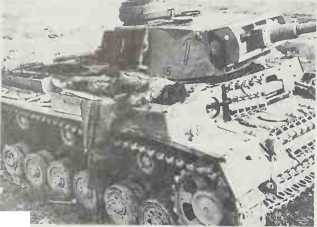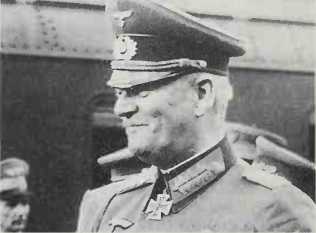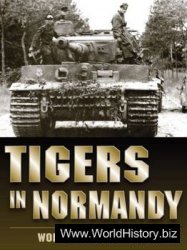
Kasserine, Battle of (February
18-22 1943). Rommel launched his spoiling offensive against II US Corps (Fredendall) immediately after von Arnim had driven 1st US Armoured Division out of Sidi Bou Zid on February 14. He attacked the Kasserine Pass on the 19th with the Afrika Korps’ Assault Group, and routed the inexperienced American troops sent to defend it, spreading alarm amongst the Allies, whose rear areas were exposed. Having cleared the American threat to his own rear, he broke off the offensive on the 22nd, and drove back south to attack Montgomery at Medenine.
Katyn Wood massacre. Mass murder of 4,253 Polish pows by the NKVD. The corpses were discovered by the Germans in 1943.
Katyusha. Mobile Soviet multiple rocket projector used for area bombardment. Introduced during World War II; variants remain in service in the 1980s.
Kawabe, Lt Gen Masakazu
(1886-1965). Jap. cos to China Expeditionary Force, then Commander Burma Area Army, 1943. Proclaimed Burma’s “independence”, August 1 1943. Commander, Central District Army, 1944.
Kawabe, Lt Gen Torashiro
(1890-1960). Jap. A long-serving staff officer, brother of Masakazu Kawabe; appointed Army Vice-cos in April 1945. On August 19-21 1945, he flew to Manila as plenipotentiary to MacArthur, receiving the US commander’s instructions regarding the surrender ceremony, the demobilization of Japanese forces, and the initial stages of the occupation.
Kawanishi Type 2 Flying Boat (H8K2) “Emily” (Japanese,
WWII). Long-range maritime reconnaissance-bomber; crew 10. Prototype flew December 30 1940; officially adopted June 26 1943. Exceptionally long range and heavy armament made it formidable and effective in the Pacific. Production 175. Four l,850hp Mitsubishi MK4Q Kasei engines; max. speed 282mph (454kph); 3,5281b (1,600kg) bombs, or two 1,7641b (800kg) or 2,2041b
(1,000kg) torpedoes; three 20mm cannon, three 7.7mm machine guns.
Kawanishi N1K2-J Shiden-Kai (Violet Lightning) “George”
(Japanese, WWII). Single-seat fighter derived from Kyofu seaplane fighter; prototype Shiden flew December 27 1942. Production aircraft coming forward late 1943; engine and undercarriage problems delayed general use for some months. More than a match for contemporary American fighters 1944; development Shiden-Kai better still, but production severely hampered by American strategic bombing. Production 1,007 Shiden, 428 Shiden-Kai. One l,990hp Nakajima NK9H Homare 21 engine; max. speed 370mph (595kph); four 20mm Type 99 cannon, up to 1,1021b (500kg) bombs.
Kawasaki Ki 61 Hien (Swallow), “Tony” (Japanese, WWII). Single-seat high-altitude interceptor fighter; prototype flew December
1941. First production delivery August 1942; operational use began April 1943. Heavier armament fitted to some aircraft; extensive modifications made to the design. Combat qualities excellent but use impaired by serious engine defects. American bombing virtually stopped engine production; adoption (late 1944) of l,500hp Mitsubishi Ha 112-11 engine created the very successful Ki 100. Production 3,078. One l,175hp Kawasaki Ha 40/l,500hp Kawasaki Ha 140 engine; max. speed 379mph (610kph); two 20mm cannon, two 12.7mm machine guns, 1,1021b (500kg) bombs.
Kearby, Col Neel E (1911-44). US. Commander of the US 348th Fighter Group in the Pacific, 1943-44, Kearby won the Congressional Medal of Honor for destroying six Japanese aircraft in a single mission near Wewak, New Guinea, on October 11 1943. Having scored 22 victories, he was killed in action on March 5 1944.
Keightley, Gen Sir Charles (1901
1974). Br. Commander 6th Armoured Division during the Tunisian campaign. He took over 78th Division in Italy in February 1944, was promoted to command V Corps in August, and remained in its command for the rest of the Italian campaign. Subsequently he was c-in-c baor, 1948-51: c-in-c Far East Land Forces, 1951-3; c-in-c Middle East, 1953—7, commanding the Anglo-French forces in the Suez Crisis of 1956 before becoming Governor of Gibraltar, 1958-62.

“Hitler’s lackey”: Field Marshal Keitel
Keitel, Field Marshal Wilhelm
(1882-1946). German. Served in the artillery and then held various staff posts, Western Front, World War I; with the Freikorps on the Polish border, 1919. Keitel, exploited his personal contacts to gain a succession of staff and command posts. In 1935 he became chief of the Armed Forces Office iWehrmachtamt) of the Defence Ministry, but was soon dismissed as inadequate by von Blomberg. But Keitel’s pliancy appealed to Hitler, who in February 1938 appointed him Chief of the High Command of the Armed Forces (oKw), where his major role was slavishly to endorse Hitler’s strategic decisions. He acquiesced in the worst features of Nazi oppression, inter alia issuing the infamous Nacht und Nebel (“Night and Fog”) decree. Keitel signed the final ratification of surrender at Berlin, May 8 1945. Convicted at the Nuremberg trials of war crimes, he was hanged on October 16 1946. MS.
Kennedy, John Fitzgerald (191763). US. Lieutenant, US Navy (commander PT-109 torpedo boat), 1941—45. 35th President of the United States, 1961-63, when the US reached the apogee of its military power and international influence. The “finest hour” of his Administration was the resolution of the Cuban Missile Crisis (1962). Favoured counter-insurgency strategy in Cold War, especially in East Asia; inaugurated the space race. Assassinated Dallas, Texas, November 22 1963. BHR.
Kenney, Gen George C (1889
1977). US. A man of immense drive and ability, Kenney joined the Aviation Section of the US Signal Corps in 1917 and served as an officer in France with the US 91st Aero Squadron, shooting down two German aircraft before the Armistice in November 1918. Although still only a lieutenant colonel in January 1941, he rose rapidly to the rank of major general by February 1942. In July that year he was appointed Commanding Gen of the Allied Air Forces in the Southwest Pacific, thus becoming Gen MacArthur’s senior air officer. In September 1942 he also took command of the US Fifth Air Force. His units provided invaluable support for Allied ground and naval forces in the New Guinea campaign and the Battle of the Bismarck Sea and later helped to neutralize the Japanese base at Rabaul on New Britain. The use of parachute fragmentation bombs, the supply by air of troops in the jungle and the development of skip-bombing and low-altitude attacks against Japanese shipping were all techniques which Kenney fostered. From the summer of 1944 he commanded the Far East Air Forces and led this formation throughout the reconquest of the Philippines and until the end of the war, by which time his bombers were operating from Okinawa against targets in Japan. From 1946 to 1948 he was Commanding Gen of the US Strategic Air Command. He retired in 1951. PJS.
Kerch Peninsula, Battle of (1941 —
42). By the winter of 1941 the Germans were in control of the entire Crimean peninsula with the exception of Sevastopol. The Soviet High Command therefore decided to land forces on the Kerch Peninsula, the easternmost point of the Crimea, and attack the rear of von Manstein’s Eleventh Army. On December 26, in appalling weather conditions, Soviet Fiftyfirst Army began landing near Kerch but failed immediately to secure its objective. Meanwhile, over 40,000 men of Fortyfourth Army went ashore near Feodosia and captured the port. The presence of these substantial forces in his rear forced Manstein to break off his attack against Sevastopol. On January 15 1942 he drove the Soviet forces out of Feodosia. Nevertheless, Gen Kozlov, the commander of the Crimean Front, and Commissar Mekhlis, Stalin’s representative, determined to launch an offensive. Their attack began on February 27 but made little headway; on May 8, Manstein counterattacked. The Soviet units were poorly positioned and lacked adequate command and soon all three of their armies were in headlong retreat. By May 14 the Germans had entered Kerch. Kozlov frantically attempted the evacuation of his forces to the mainland, with little success. The Kerch enterprise was another disaster for the Red Army with the loss of 176,000 men, 350 tanks and
3,500 guns. Manstein returned to the reduction of the Sevastopol defences. MS.
Keren, Battle of (February-March
1941). In hard fighting from February 3-10, 4th Indian Division failed to manoeuvre Frusci’s forces out of the strong natural defensive position at Keren. Platt brought up 5th Indian Division and launched a two divisional offensive on March 15. Italian resistance did not collapse for another ten days. Keren fell on March 27, Asmara on April 1, and Massawa on the 8th.
Kerensky, Alexander (18811970). Russian. A Socialist politician who played a leading part in the overthrow of the Tsar in March 1917. He became Minister of Justice in Prince Lvov’s provisional government and in the succeeding coalition of Socialists and Mensheviks he was Minister of War. He believed he could maintain the Russian war effort and his brilliance as an orator created the illusion, shared among others by Lloyd George, that this might be so. In July 1917, he became Prime Minister. He escaped into exile when the Bolsheviks seized power in November 1917. Russia then made a virtually unconditional surrender to Germany. ANF.
Kesselring, Field Marshal Albert
(1885-1960). Ger. cos of the Luftwaffe in 1936; Commander Luft-flotte 1 in the Polish campaign of 1939; Commander Luftflotte 2 in the invasion of France and the Battle of Britain in 1940, and in the invasion of Russia in 1941. When Hitler decided to intervene again in the Mediterranean in the autumn of 1941, Luftflotte 2 was redeployed to Italy, and Kesselring was appointed c-in-c South with the task of establishing Axis naval and air superiority over supply routes to North Africa. His responsibilities were progressively widened and he became all but c-in-c of Axis forces in the Mediterranean, which were nominally under Italian command.
After the fall of Mussolini and the Allied invasion of Italy, he proposed defending Italy as far south as possible, contrary to Rommel, who advocated withdrawal to the Pisa-Rimini Line in the Northern Apennines. Hitler sided with Rommel initially, but changed his mind when Kesselring managed to slow the Allies’ advance north from Naples, and authorized him to stand on the Gustav Line.
Kesselring defeated Alexander at Anzio and Cassino early in 1944, but was decisively defeated by Alexander in the “Diadem” offensive in May, and was forced to abandon Rome and withdraw to the Gothic Line. When that line was breached by the Allies in the autumn, he advocated withdrawing to the Alps, but Hitler refused. Nevertheless, he managed to hold the Allies in the Northern Apennines until spring of 1945. On March 10 1945, Hitler made him c-in-c West with the impossible task of preventing the Anglo-American forces overrunning the Reich from the West. After the war, he was found guilty by the War Crimes Tribunal in Venice of atrocities against Italian partisans. The death sentence was commuted to life imprisonment. He was released in 1952. WGFJ.




 World History
World History









